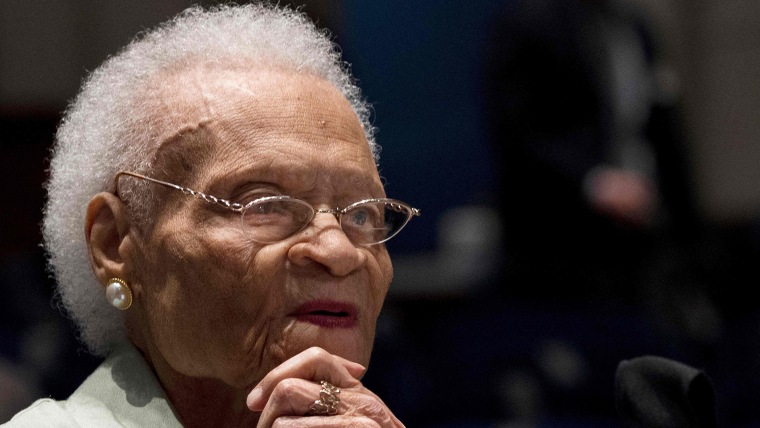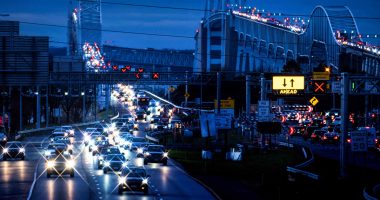Culver said that in 2013 when Forbes called Tulsa the best place for young entrepreneurs, he didn’t think the magazine wasn’t talking about Black entrepreneurs, many of whom lack the capital and connections to compete. The same goes for the arts district, which Culver and others note was developed largely through tax incentives and loans that mostly went to white developers. He said outside of the single remaining block of Greenwood businesses, there are only four Black property owners in the downtown area, one of which is the Greenwood Chamber of Commerce.
Tulsa’s Black residents have faced displacement and a loss of property and wealth that has stretched across generations. Most live outside of Greenwood in north Tulsa, while the wealthier downtown remains largely white. Half of white Tulsans own their homes, compared to barely more than a third of Black Tulsans. White households have a median income $20,000 higher than the average Black family.
“The plot to take it over has happened — it just didn’t happen in 1921,” said Sean Thomas, a doctoral candidate at Oklahoma State University’s geography department. “And it didn’t happen via the massacre — it happened over time through just urban renewal and regular processes.”
Thomas is releasing an app this month that shows the original land plots of the massacre’s victims laid out over a map of the neighborhood. He plans to turn over all of his digitized research to the Tulsa County Clerk’s Office, which he hopes will add in any future discussions about equity and reparations.
‘Robbed of that opportunity’
Many historians, researchers and locals now agree that the 1921 race massacre wasn’t a spontaneous event sparked by an interaction between a young Black man and a white woman. The mass destruction, the planes loaded with fire bombs, the city ordinances that hampered rebuilding efforts, and the internment camps all took time to put in place.
The city wanted to raze much of what remained of Greenwood to build a train depot and move the area’s residents north, but a lawsuit stopped the plan. By December 1921, more than half of the more than 1,200 homes destroyed were in some form of reconstruction or repair, according to the Red Cross.
Mabel Little’s beauty salon was destroyed during the massacre, along with her home. She left Oklahoma and forged a successful career as an inspector and supervisor for Lockheed Martin in California during World War II, then returned to Greenwood in the 1950s when it was booming. She rebuilt her business and home — only to have them seized and leveled around 1970 under eminent domain to build the expressway.
“I’m heartbroken that I didn’t get the opportunity to participate in that community,” said Jennifer King, Little’s great niece, who is head of marketing for a Dallas law firm.
In the 1950s, Greenwood’s population was pushing 10,000. Through the many auto garages, restaurants, doctor’s offices and beauty salons like Little’s, Black residents had firmly rebuilt much of the generational wealth the massacre had threatened.
“My generation, my mom’s generation, are robbed of that opportunity,” King said. One of her great aunts ran a successful restaurant — known for its smothered chicken, which happens to be King’s favorite recipe — that was destroyed in the massacre. “Had things been different, I’d be making smothered chicken in Tulsa.”
Making the future equitable
Greenwood’s residents have been calling for reparations for generations.
“Urban renewal not only took away our property, but something else more important — our black unity, our pride, our sense of achievement and history,” 1921 survivor and longtime Tulsa elementary school teacher Jobie Holderness told historian Eddie Faye Gates for her 1997 book “They Came Searching: How Blacks Sought the Promised Land in Tulsa.”
“We need to regain that,” Holderness said.
Burlinda Radney, a Tulsa realtor, sees what happened in 1921 as an extension of a larger movement to rob Black families of generational wealth and property — one that continues today in Greenwood, she said, where the neighborhood’s families and their descendants have little input on the community’s future.
Radney said Black entrepreneurs with ties to Greenwood want to be a part of the growth happening here, as the city seeks to fill land and buildings that have long sat vacant. But if racial equity isn’t considered in the redevelopment, she said, then Black residents will continue to lose out on leases to the wealthy and well-connected. State law requires decisions around incentives and loans to be race-neutral.
Most of what remains of Greenwood’s 35 blocks is owned by the City of Tulsa and the Tulsa Development Authority. Where those 40 grocery stores once operated, zero remain. The neighborhood’s children were forced to leave when their families’ homes were demolished, so what used to be Frederick Douglass Elementary School has become a police substation.
In a lawsuit filed against the city and the development authority, among others, on behalf of several residents of Greenwood, Tulsa attorney Damario Solomon-Simmons argues that the lack of schools, access to nutritious food, jobs and housing all play a part in the lost property value. That reflects the city’s unwillingness to provide Greenwood — as well as north Tulsa, where the majority of Tulsa’s Black residents live — with adequate support for growth, the lawsuit says.
The lawsuit details evidence that officials with the city of Tulsa, including police, participated in the violence of 1921 and connects that to the city’s use of the massacre as a way to promote tourism, which resulted “in their unjust enrichment at the expense of these communities and worsened the racial disparities including the wealth divide.”
The city of Tulsa and the Tulsa Redevelopment Authority declined to comment on the lawsuit or speak on equity in the redevelopment plans.
‘They’re still taking’
When it comes to Greenwood’s future, some here think I-244 — which runs east-west and sits on top of what were once famous cultural hubs, like the Dreamland Theater — should be lowered to a thoroughfare. Others think it should be buried in a tunnel so that the property on top provides new real estate. Many also want to see I-75, which sliced off most of the eastern edge and northern stretch of Greenwood, removed.
I-75 gave Tulsa a chance to recruit the young, mostly white professionals of the 1970s who wanted an easy way out of downtown to the suburbs. Returning the land wouldn’t just lead to new prosperity for Greenwood and its residents, Radney said; it could also lead to other forms of healing, like turning the police substation back into a school.
“Frederick Douglass Elementary being a police substation, that’s an affront to me,” she said. “The city’s will is what we’re looking at today.”
As Moreno, the author, finished his walk around the neighborhood recently, he stopped at the numerous plaques in the sidewalk along Greenwood Avenue, commemorating the people and businesses lost over the last century. There’s one at the foot of a small hill where Dr. A.C. Jackson, who was shot in front of his home as he peacefully surrendered in 1921, once lived. Today, it’s part of Oklahoma State University’s Tulsa campus.
A stone’s throw away, another commemorates the Dreamland Theater, where residents once enjoyed musicals and revues.
Moreno stopped to wipe pine tree needles off the Dreamland Theater plaque, which today sits in front of a berm on the interstate. The leases have already been signed in the gentrified arts district, but Moreno wonders why the land across I-244 in northern Greenwood, where empty lots and abandoned factories remain, isn’t given back to the community it was taken from.
“They’re still taking,” Moreno said. “You have this through-line since the highway program where Greenwood has no say in what happens to its own land.”
Source: | This article originally belongs to Nbcnews.com











